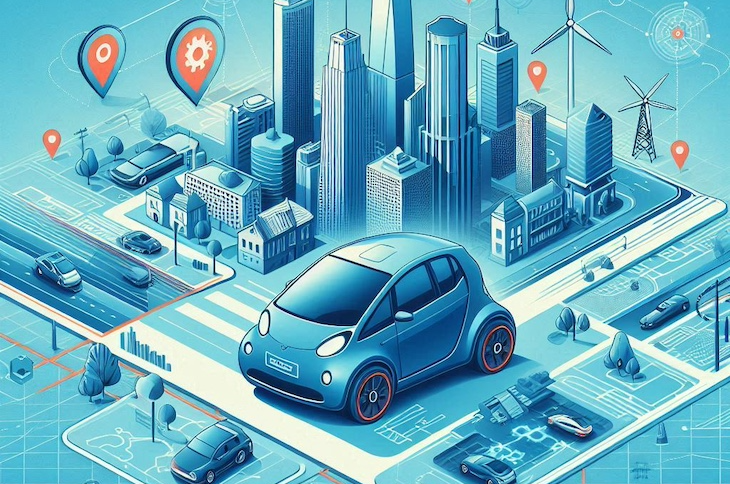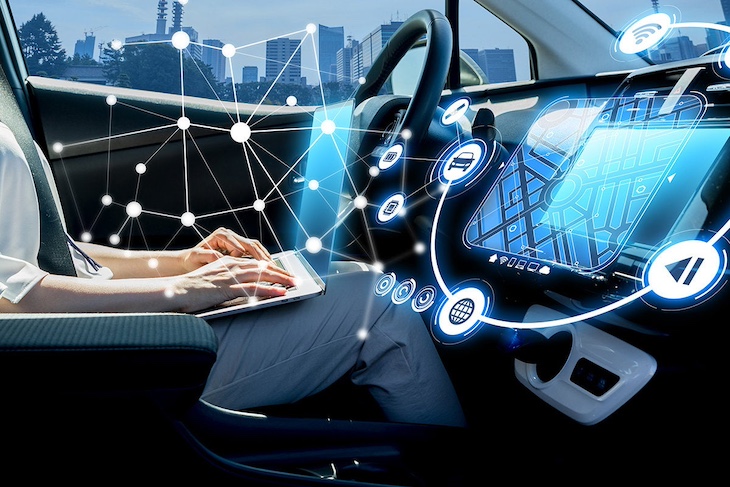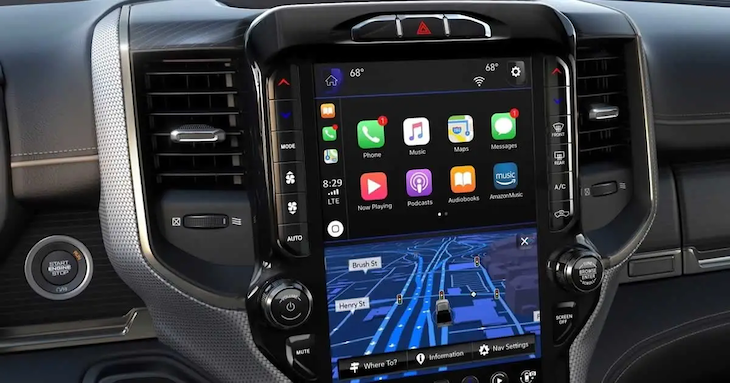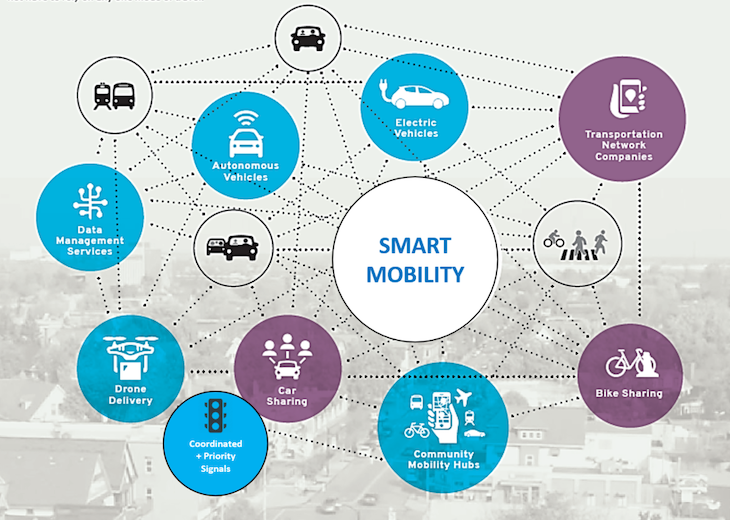In one of our previous articles, we delved into the NDS roadmap for 2023-2025, outlining key strategic focus areas. These focus areas identified practical applications where NDS.Live, the online and dynamic evolution of NDS maps, could provide significant value across various areas of the mobility industry. Today, we explore the most promising use cases for NDS.Live maps as they evolve in 2025, supporting key trends in autonomous driving, in-vehicle infotainment, smart mobility, and more.

Autonomous mobility
As autonomous driving continues to advance, the demand for precise and context-aware map data continues to grow. Autonomous mobility systems like ADAS and autonomous driving platforms, rely on accurate and recent maps to navigate and make real-time decisions. NDS.Live plays a pivotal role by provisioning dynamic map data that is highly adaptable to changing road conditions and scenarios.

NDS.Live for Operational Design Domain (ODD) awareness: One of the core challenges in autonomous mobility is ensuring that the vehicle operates within its ODD. NDS.Live provides the necessary data for ODD awareness, helping autonomous vehicles stay within their defined operational boundaries and adhere to region-specific regulations.
NDS.Live-OpenDRIVE converter & AI integration: In 2025, NDS.Live data is increasingly integrated with AI systems, offering enhanced relevance and context awarness to autonomous driving decisions. For example, the NDS.Live-OpenDRIVE converter simplifies the integration of map data into simulation and testing environments, streamlining the development of AI-driven automotive solutions.
Additionally, the flexibility of tile-based data modeling provided by NDS.Live supports autonomous trucking and robotaxi applications, which require real-time updates across diverse geographical areas. Each tile in NDS.Live is self-contained, including all the data necessary for a particular use case without relying on adjacent tiles. This modularity is essential for autonomous systems that operate in fragmented, dynamically changing environments.
Today, companies like HERE Technologies leverage NDS.Live for their navigation maps, ensuring seamless integration with ADAS and HD systems. This allows vehicles to receive over-the-air (OTA) updates, reducing hardware costs while maintaining high-performance navigation across ever-changing environments.
In-vehicle infotainment
The in-vehicle experience has transformed over the years, shifting from simple navigation tools to fully integrated infotainment systems offering entertainment, communication, and real-time services. NDS.Live supports this transformation by providing map data that enhances in-vehicle experiences and powers hybrid navigation systems.

Hybrid navigation best practices: The increasing demand for highly accurate and up-to-date data places enormous pressure on onboard systems with limited storage and computing power. NDS.Live addresses this by supporting hybrid navigation, a system that combines local data with cloud services. This ensures that the vehicle has access to the latest information without overloading onboard resources.
Augmented Reality (AR) use cases: In 2025, AR is becoming a key component of in-vehicle infotainment. NDS.Live enables augmented reality features by providing accurate localization services for geospatial data in real time, enhancing the driver’s experience with visual overlays that guide navigation, highlight points of interest, or provide safety alerts.
Real-time information services: NDS.Live also supports real-time information services, helping hybrid navigation systems provide up-to-the-minute updates on traffic conditions, road hazards, and even personalized routes based on user preferences. This creates a smoother, safer, and more enjoyable driving experience.
Software-defined vehicles
The future of the automotive industry lies in software-defined vehicles (SDVs), where most functionalities are controlled or updated via software. NDS.Live is pivotal for this shift, providing the map delivery services that SDVs require to function efficiently and securely.
Supporting Service-Oriented Architecture (SOA): One of the key technological shifts for SDVs is the adoption of SOA, a modular approach where different software components communicate through specified interfaces. NDS.Live is fully compatible with SOA, ensuring that map data can be delivered dynamically based on the vehicle’s needs.
For example, instead of relying on static NDS maps, which require regular manual updates, NDS.Live leverages cloud-based services to provide real-time information. This includes dynamic route calculations, speed limit updates, and range observations for electric vehicles (EVs). By integrating NDS.Live with SDVs, automakers can continuously optimize vehicle performance through OTA updates, reducing the need for costly hardware interventions.
E-Mobility
Electric mobility is another area where NDS.Live delivers value. As the number of EVs on the road grows, so does the need for accurate map data to support e-mobility solutions, particularly around charging infrastructure.
Advanced POI data for EV charging stations: NDS.Live offers detailed Points of Interest (POI) data related to EV charging stations, including compatibility with different vehicle types and the availability of connectors. For EV drivers, this means access to up-to-date information on nearby charging stations, helping them find the most convenient and compatible locations to recharge.
NDS.Live also supports the management of complex charging infrastructure. For example, each charging station may have multiple terminals, each with different charging speeds and connectors. NDS.Live helps organize this information, enabling better power management and billing accuracy for EV users.
Safe mobility
As vehicles become more connected and autonomous, safety, privacy, and security are gaining vital importance. NDS.Live contributes to safer mobility by offering secure interfaces and data transmission protocols.
Safety-Related Traffic Information (SRTI): NDS.Live provides essential services related to safety, including SRTI, which informs drivers of hazardous conditions or upcoming road conditions. This real-time data helps vehicles make better decisions and avoid accidents.
Compliance with Euro NCAP Standards: As safety regulations evolve, NDS.Live continues to align with international standards such as Euro NCAP’s Assisted Driving Grading and Speed Assist Systems. The map format also incorporates privacy and cybersecurity considerations, ensuring that sensitive data is always protected.
Smart mobility
NDS.Live is poised to play a major role in the development of smart mobility ecosystems, where vehicles, infrastructure, and services communicate seamlessly.

Supporting C-ITS and automotive IoT: NDS.Live is highly relevant to Cooperative Intelligent Transport Systems (C-ITS), where vehicles share information with each other and the surrounding infrastructure. NDS.Live provides self-contained tiles and object-based transmission models that simplifies distribution of data to multiple vehicles in a specific corridor, ensuring real-time updates and enhancing safety.
In 2025, NDS.Live stands at the forefront of automotive innovation, supporting use cases that range from autonomous driving to e-mobility and beyond. Its modular, cloud-based structure ensures that vehicles can receive the latest map updates, enhancing both performance and user experience. As the foundation for next-generation automotive systems, NDS.Live continues to reshape the way we think about navigation, mobility, and the future of transportation.
Would you like to explore the full capabilities of NDS.Live? Visit the NDS.Live Developer Portal.
Back to news →